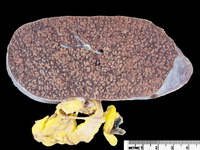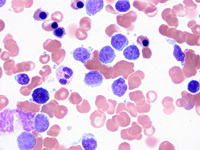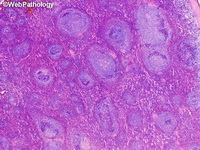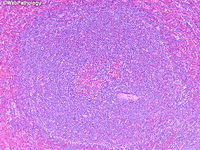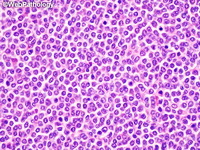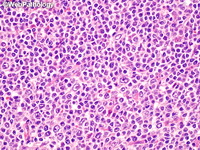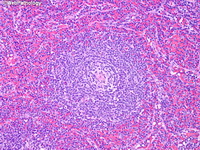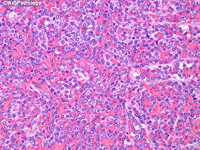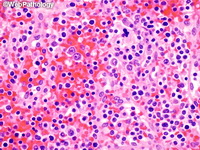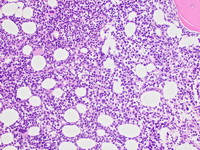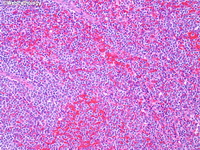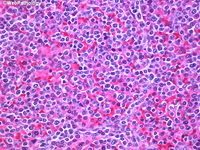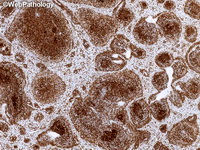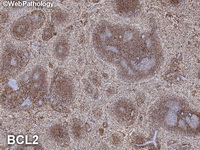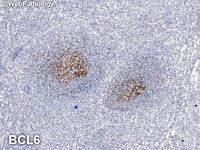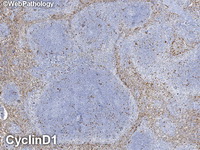Aug 2021
Splenic Marginal Zone Lymphoma
Reviewer(s): Dharam Ramnani, MD
Splenic marginal zone lymphoma (SMZL) is a low-grade B-cell lymphoma that makes up 1% to 2% of all lymphomas. The median age at presentation is 65 years.Clinical features include fever, weight loss, night sweats, splenomegaly and bone marrow involvement. Peripheral blood shows lymphocytosis with or without villous cells. The villous lymphocytes show cytoplasmic projections at one pole of the cell. Autoimmune manifestations such as autoimmune hemolytic anemia are sometimes present. Abdominal lymphadenopathy and serum paraproteinemia are seen in about a quarter of cases. A small number of cases have associated Hepatitis C infection.It is important to note that SMZL is distinct from and unrelated to marginal zone lymphomas (MZL) arising in mucosa-associated lymphoid tissue (MALT) and nodal MZL. Infectious agents, such as Hepatitis C Virus may play a role in the pathogenesis in at least a subset of patients.SMZL generally has a favorable prognosis. Five-year survival rates range from 65% to 78%. Transformation to large B-cell lymphoma occurs in between 10% to 15% of cases. This contrasts with 1% to 10% risk in chronic lymphocytic leukemia and between 25% to 60% risk in follicular lymphoma. Disease progression in SMZL has been linked with 7q loss.


